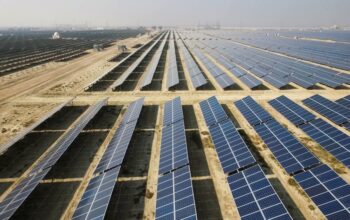High time for Pakistan to put people at the centre of the water discourse
From the Editors
Sindh Chief Minister Syed Murad Ali Shah while speaking to media at Sehwan earlier this week expressed his resolve to take up the issue of water shortage in Sindh in the Council of Common Interest. Later in the week a strong worded statement, issued from the Sindh CM demanded judicious distribution of water and called upon the federal government to adhere to the IRSA accord 1991.
Shah has been very vocal in the past in criticizing the Indus River System Authority, which monitors water distribution and sharing along the Indus as unduly favoring Punjab province. The Indus is a water lifeline for over 200 million Pakistanis in a predominantly agrarian economy. Despite assurances from the previous PTI government, this year again over 50 million tail-end farmers in the lower riparian province of Sindh have kicked off the Kharif season with a shortage of nearly 40 per cent, amidst allegations of opening the link canals of upper provinces earlier than the promised time.
Water protests in Sindh are becoming a norm around this time of the year. Growers from Thatta staged a sit-in protest during the week, blocking the National Highway on account of the acute water shortage. The angry mob complaining of dry canals and water unavailability for irrigation and drinking purposes dispersed after assurances from the Sindh government to address the agricultural water shortage in Thatta.
Sharjeel Memon, Sindh’s information minister also made an appeal to the federal government to supply Sindh’s share of irrigation water saying the current crisis in Sindh has been affecting fruit orchards and agricultural crops, worrying the farmers.
The water woes of Sindh are not limited to agriculture only. Two of the largest freshwater lakes in Pakistan, Keenjhar and Haleji, have been receiving reduced inflow of water from the Indus River. Unlike other provinces of Pakistan, Sindh requires a minimum environmental flow for health of its water bodies such as the Indus Delta mangroves and coastal wetlands to maintain the natural balance of the water ecosystems.
According to the Water Apportionment Accord 1991, Sindh receives 42 per cent of the water share from the Indus Basin. The census of 1998 counted 30 million people in Sindh which has gone up to 47 million as per the 2017 population census. Yet, the water availability has not been revised in accordance with the population growth, rapid industrialization and urbanization in the province.
Pakistan has already made it to the list of top 10 water scarce countries. There is an urgent need to highlight the social and environmental costs of poor water resources management across Pakistan, particularly in Sindh. It is pertinent to rethink distributive justice of the Indus and devise an audit mechanism of water usage and redistribution to all parts of Pakistan.
The recent political developments should be played in favour of the people along the Indus. Being a coalition partner, Sindh’s complaint of centre paying no heed to its woes must come to an end. The Prime Minister Shehbaz Sharif is urged to immediately engage IRSA for putting together a plan for subsequent cultivation seasons.
There is a needs for a paradigm shift in thinking about the management of water resources for the benefit of all. The centre must contemplate putting people at the centre of the discourse for once.
Copyright © 2021 Independent Pakistan | All rights reserved




